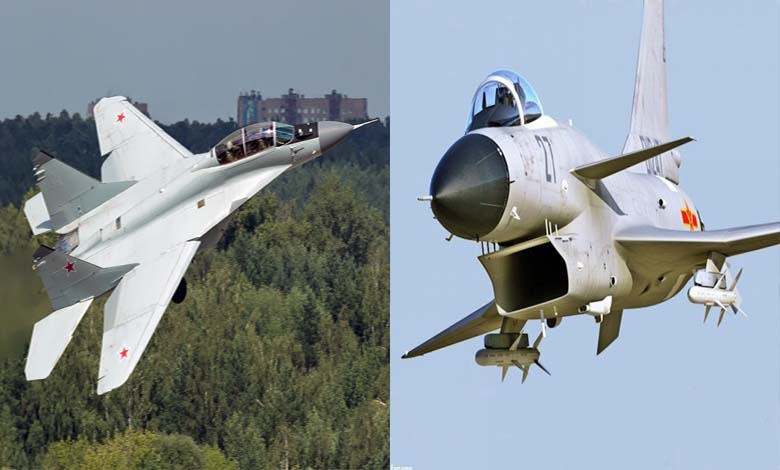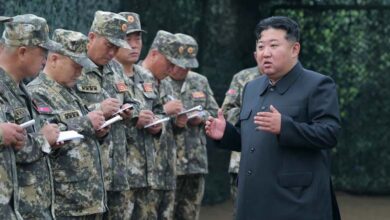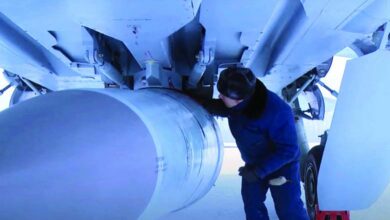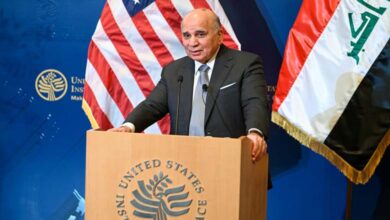Chinese J-10C vs. Russian MiG-29M: Which Fighter Jet Is Best for Egypt?

Amid growing regional challenges and the increasing need to modernize its military capabilities, Egypt is consistently working to upgrade its air force with the latest fighter aircraft.
In this context, the Chinese J-10C and the Russian MiG-29M have emerged as two key contenders, especially after the recent participation of J-10C aircraft in the “Eagles of Civilization 2025” military drills over Egyptian airspace, alongside Egypt’s MiG-29M jets.
-
The “Double-Tailed Scorpion”: An Impressive Chinese Military March
-
Weapon Tests Precede Russian Official’s Visit… Kim’s Messages to Allies and Enemies
The military-focused website Military Watch published a detailed comparison between the two fighters, highlighting their key features. According to the site, Egypt currently operates 46 MiG-29Ms, making it the world’s largest user of this model.
Although there has been speculation about Egypt possibly ordering more MiG-29Ms or the more advanced MiG-35, comparisons with the Chinese J-10C suggest compelling reasons for greater interest in the latter.
-
China Changes the History of Warfare with a Non-Nuclear Warhead
-
Largest Attack in Three Years: 337 Ukrainian Drones Fall into the Russian Trap
Both the J-10 and MiG-29 were designed as lightweight fighters to complement the heavyweight Su-27, which has formed the backbone of the Soviet air force since 1984 and the Chinese air force since 1992. In the 1990s, China acquired large numbers of Su-27s, even surpassing the Russian fleet, and began licensed production before developing improved models such as the J-11, J-11B, and eventually the J-16, a highly advanced 4.5-generation fighter.
The J-10 entered service in 2004 with advanced tech similar to the J-11B. The enhanced J-10C was introduced in 2018 as a 4.5-generation fighter comparable to the J-16.
-
Balloon Warfare: The Soviets’ Hidden War against the Ghosts of the Sky
-
The Buried Hell… What Is China Hiding Beneath Its Mountains?
By contrast, following the collapse of the USSR, the cash-strapped Russian air force abandoned its mix of heavy and light fighters and focused on improving the Su-27 platform (Su-34, Su-35), with minimal investment in MiG-29 or MiG-35 development.
As a result, while China operates about 300 J-10Cs, Russia has no MiG-29Ms in active service and only six MiG-35s.
China’s much larger investment in the J-10C program and integration of cutting-edge technology make the jet significantly more appealing than the MiG-29M. Additionally, large-scale production provides significant cost advantages.
-
A New Russian Tactic to Capture Ukrainian Drones
-
Drones and War in Sudan: A New Strike on “Merowe” Plunges the Region into Darkness
Another major advantage of the J-10C is the rapid advancement of China’s combat aviation sector. This is evident in the J-20, one of the world’s most advanced 5th-generation fighters, alongside the U.S. F-35. In contrast, Russia’s Su-57 has entered service at a much slower pace and lacks advanced features like full stealth and distributed sensing systems.
The technological differences — from avionics to radar and data links — give the J-10C a major edge over Russian 4th-generation fighters like the MiG-29M, and even larger aircraft such as the Su-35. Reports suggest that the J-10C has consistently outperformed the Su-35 in mock dogfights.
-
The “Orechnik” Surprise: The Russian “Terrifying” Missile Pulses with a Western Heart
-
“The Russian Hell” shakes Ukraine… Learn about the “Doomsday” bomb
When comparing air-to-air missile capabilities, the gap widens further. Russia has not widely deployed its R-77M, while China’s PL-15 has been operational for over a decade. Russian fighters remain dependent on the older R-77-1, similar to the American AIM-120C or China’s PL-12, but no longer at the technological forefront.
In close combat, the J-10C also has the advantage, with its PL-10 missile offering much wider engagement angles than Russia’s R-73/74.
-
Biden wants that Turkey renounce the Russian S-400 missile defense system
-
Turkey is testing Russian-made S-400 defense systems
Overall, the J-10C is a more cost-effective fighter. Although more expensive upfront than the MiG-29M, it has much lower operating costs and significantly superior combat performance.
Moreover, China can deliver jets twice as fast as Russia — about 50 J-10Cs per year compared to 14 MiG-29M or MiG-35s, which are produced solely for export and have no domestic orders.
Purchasing the J-10C could also be a stepping stone for Egypt to acquire its first 5th-generation fighters, such as the J-35, which shares many technologies with the J-20 but is lighter, simpler, and better suited for foreign clients in terms of cost.
-
“Year of Lies and Blood”: Major Terrorist Crimes Committed by the Muslim Brotherhood in Egypt
-
The “Hasm” movement of the Muslim Brotherhood aimed to overthrow the ruling regime in Egypt… How?












